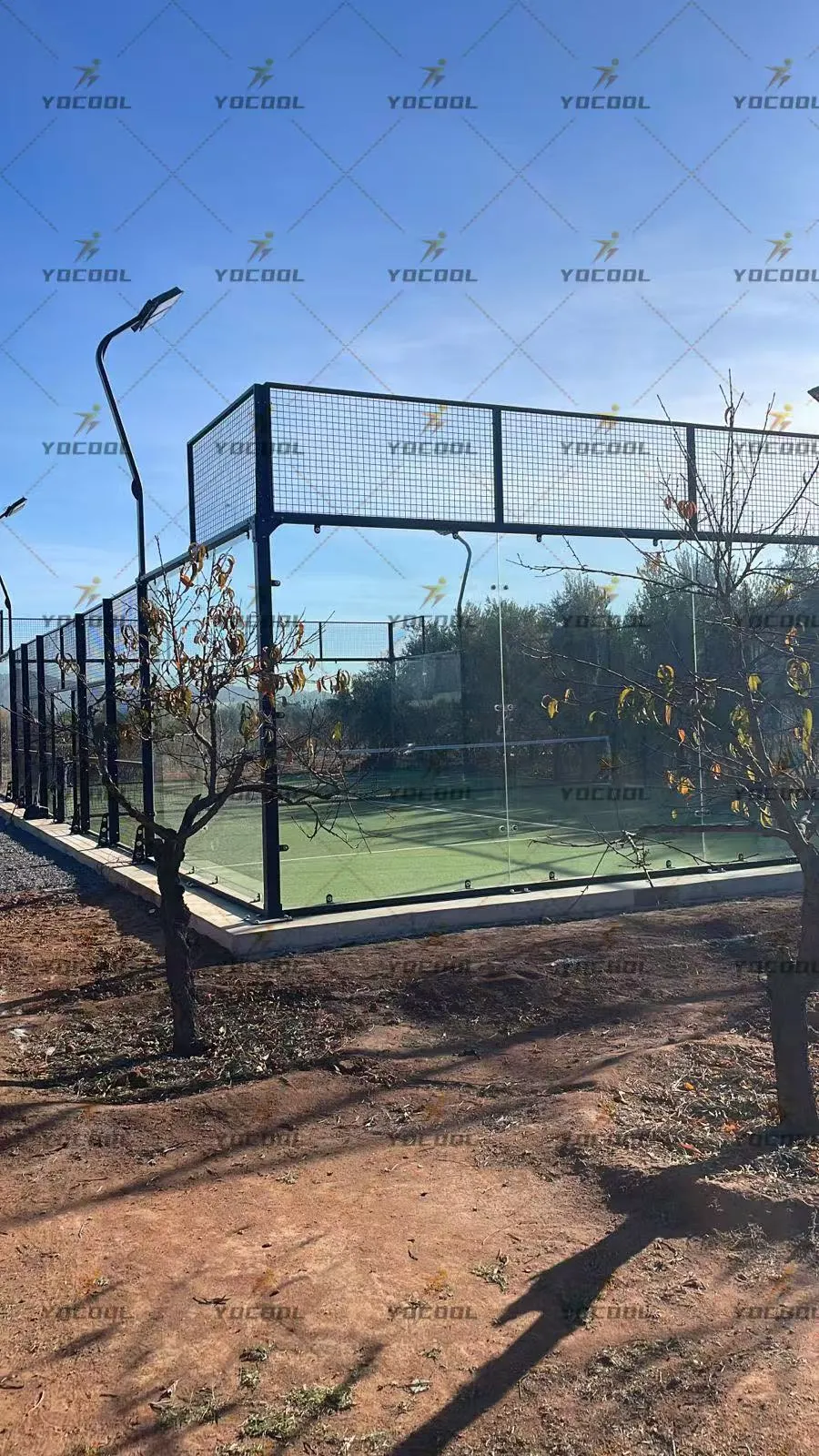

Plate tennis, as an emerging sport, is rapidly gaining popularity worldwide. Its unique sports style and relatively small venue requirements have made it a new favorite of urban sports. In the design of plate tennis courts, glass, especially special glass, plays a crucial role, affecting the fairness, safety, and even the overall viewing experience of the game. This article will explore the technical requirements, performance characteristics, and impact of Padel Court Glass on this sport.

Unlike ordinary glass, all glass squash court requires excellent strength and impact resistance. This is because in intense matches, the frequency of the ball hitting the glass at high speed is extremely high. If the quality of the glass is not up to standard, it is prone to breakage and cause personal injury. Therefore, tempered glass or laminated glass that has undergone special treatment is usually used. Tempered glass has improved its strength through high-temperature quenching process, and when it breaks, it will shatter into blunt angle small particles, reducing the risk of injury. Laminated glass is composed of two or more layers of glass sandwiching a transparent polymer film. Even if the glass breaks, the film can bond its fragments together, effectively preventing glass splashing. In addition, the flatness of the glass is also crucial, as uneven glass can cause abnormal rebound trajectories of the sphere, affecting the fairness of the competition.
Transparency is a basic requirement to ensure that the audience can watch the game clearly. More importantly, glass needs to have good reflective properties. One of the characteristics of plate tennis is the use of an all glass squash court for bouncing shots. Therefore, the reflection angle and force of the glass must be moderate in order for players to accurately determine the ball's landing point and make effective counterattacks. In addition, in order to reduce glare interference, some high-end plate tennis courts use special anti glare glass to ensure that players can see clearly and focus on the game even in direct sunlight.
On the one hand, high-quality glass ensures the safety of the competition, allowing more people to participate in this sport with peace of mind. On the other hand, excellent glass performance enhances the viewing experience of the competition and attracts more spectators. The transparent padel glass also brings the audience and athletes closer together, enhancing the on-site interactive experience. More importantly, Padel Court Glass itself has become a strategic component of plate tennis, allowing players to use different angles of glass rebound to confuse opponents and increase the complexity and fun of the game.
In short, padel glass is not just a simple barrier material, but an essential component that makes up this sport. The technical requirements, performance characteristics, and their impact on the competition are all worthy of in-depth research and exploration. With the continuous advancement of technology, we have reason to believe that the future Padel Court Glass will be more intelligent and environmentally friendly, injecting new vitality into the development of this sport.
Function: Padel Court Glass allows the ball to bounce back and continue playing (similar to squash), extending the turn time and enhancing the fun of confrontation.
Rule: The ball must first land once before touching the wall, and then the player can directly hit or wait for a second rebound (not volley).
Height: usually 3 meters (back wall) and 4 meters (side wall) to ensure that the ball does not easily fly off the field.
Material: Tempered safety glass (thickness 812mm), impact resistant and highly transparent, convenient for spectators to watch.
Tactics: Proactively hit the ball towards the side wall, use the rebound angle to force the opponent to run, and consume their stamina (endurance training).
Tip: Low and flat balls are harder to catch after rebounding, suitable for breaking the opponent's rhythm (requiring precise control of strength and angle).
Spatial perception: Predicting rebound trajectories requires fast calculation of angles and velocities to improve hand eye coordination.
Dynamic balance: Frequent turning and adjusting positioning can enhance core stability and reaction speed.
Cleaning: Regularly wipe to avoid reflection or stains that may affect the player's vision.
Inspection: Before the competition, it is necessary to confirm that there are no cracks or looseness to prevent safety hazards.
Upgrade: High end venues will use anti glare coatings to reduce sunlight interference.
The Rising Padel Tennis Pickleball: A New Social Sports Venue
The Exercise Benefits of Padel Glass for Endurance and Coordination
Padel Tennis Ppickleball: Differences and Development Prospects of Emerging Ball Sports
Padel Court in its infancy: a new type of sports and social space
Padel Court Glass: Technology, Performance, and Impact
Paddle Tennis and Pickleball: a thriving sport